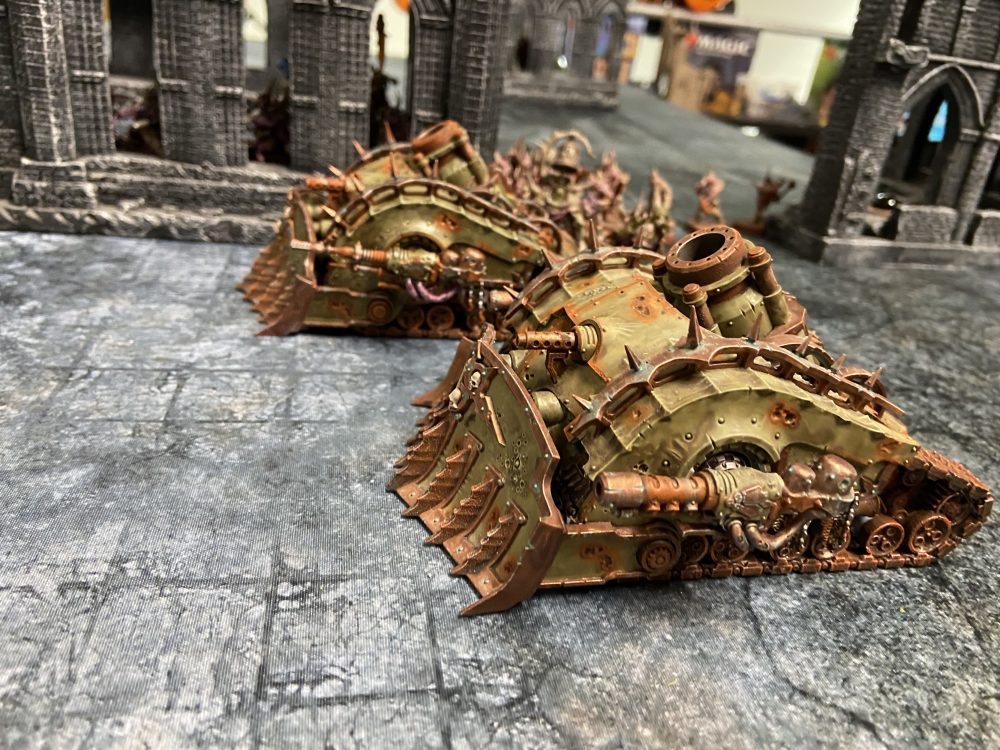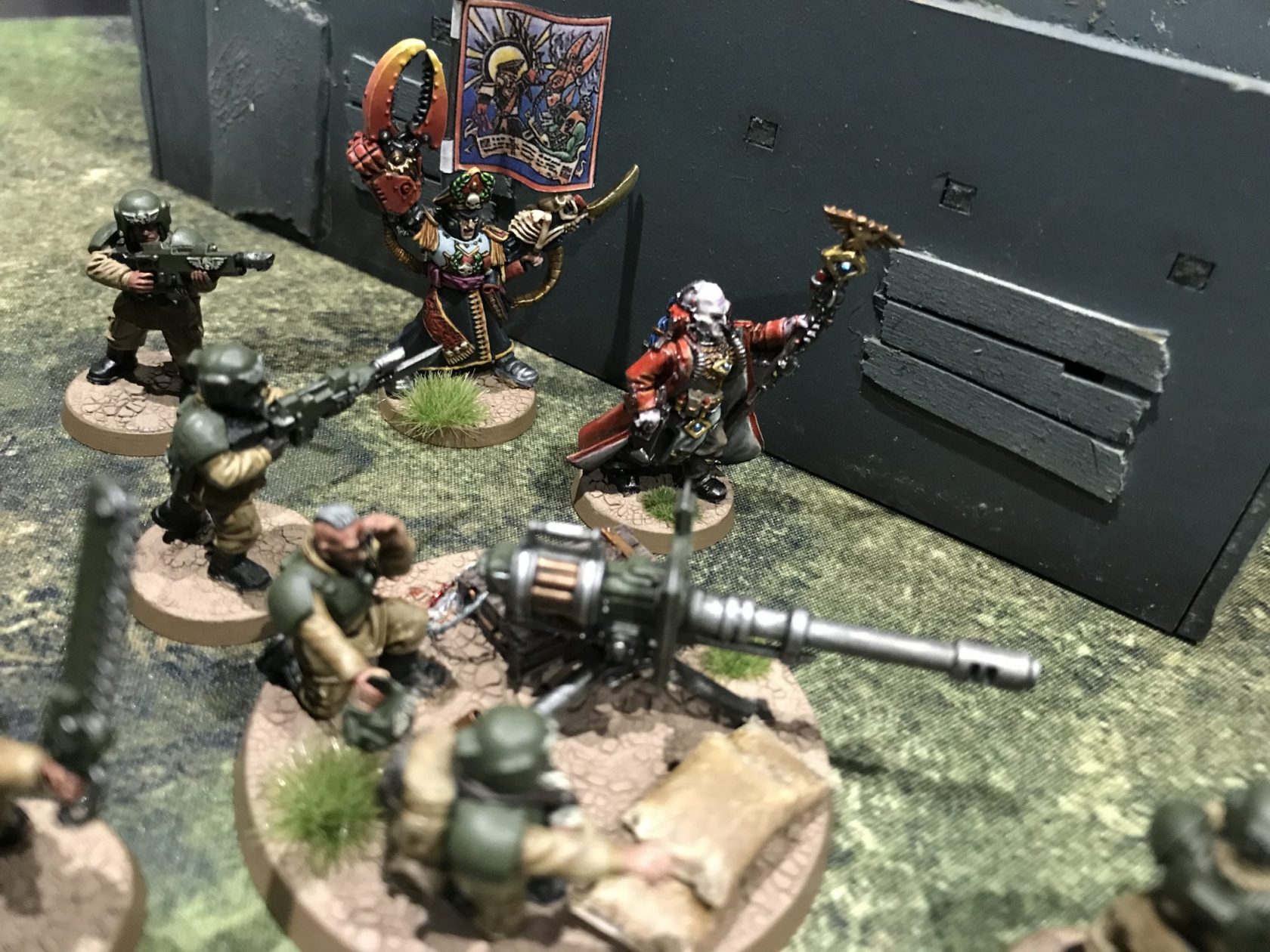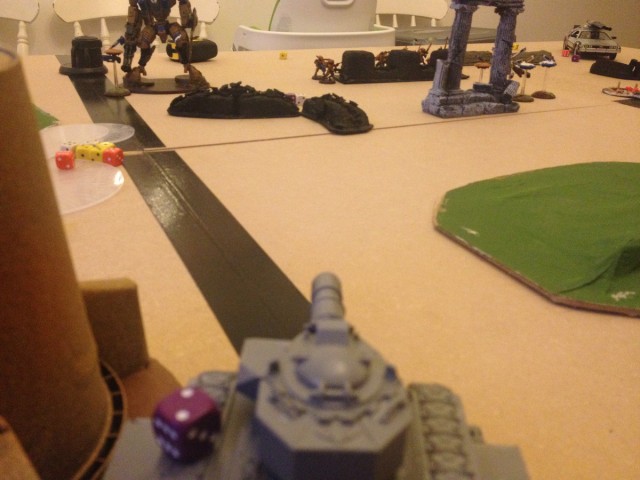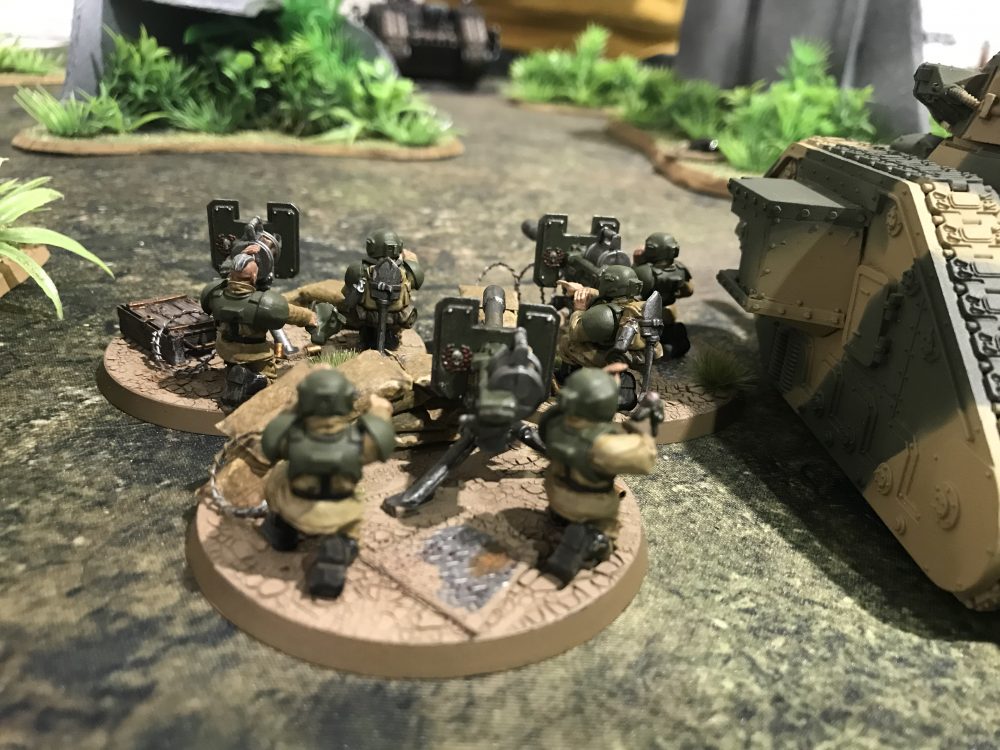Common Rules Mistakes in Warhammer 40K
An article for the newer player, but perhaps there is something for veterans too...
Let us take a look at five common rules mistakes in Warhammer 40K. During my time writing this blog I get to speak to a lot of people on Facebook, Reddit, Twitter, Instagram and on the chat widget. And during this time I get to see a lot of mistakes being made – which is understandable and OK! I thought I would document some of the most common ones so we can all learn.
The aim here is to help and nothing more. It’s not to blame or laugh at others, it’s only to help newer players. If you have a suggestion – let me know.
Never miss an article? Subscribe!
My Mistakes
I have made some absolute awful rules mistakes in the past. The most glaring was in my first game ever against the Tau.
Instead of each player completing their turn, we somehow thought that each player had a phase and it alternated. E.g. I moved, you moved, I shot, you shot, I did my melee, you did your melee.
Amazingly the game still flowed but it made for some interesting counter plays!
I have also gotten The Intricacies of Orders incorrect too – mainly due to laziness. More on this later…
Applying Modifiers
At first, glance applying modifiers seems simple. If I’m Ballistic Skill 4+ and I have a -1 modifier to my Ballistic Skill – then I’m now Ballistic Skill 5+?
While that is correct in some cases things get very odd when you have a modifier and a re-roll. This can happen a lot!
If you have a modifier and a re-roll then the modifier is taken into account after any re-rolls have occurred.
Applying Modifiers Example #1
This is best showcased as an example. You have Leman Russ doing D6 Plasma shots and it is overcharging. This means on a hit roll of a 1 the Leman Russ takes a Mortal Wound. Note; that this is not a natural 1, but a hit roll that results in a 1. Now imagine the Leman Russ is BS4+ with -1 to hit because the enemy has a special ability and you’re Cadian so you re-roll ones to hit.
You first roll your shots on a D6 and get a 4. You roll 4 dice to hit and roll the following;
- 1
- 2
- 4
- 5
We then apply the re-roll mechanic, which in this case is all ones – a single dice. Our final rolls are as follows;
- 2 – was a 1, re-rolled to a 2
- 2 – not a 1, not re-rolled
- 4 – not a 1, not re-rolled
- 5 – not a 1, not re-rolled
At this point, we apply the -1 to hit and the final result is
- 1, down from a 2 – a miss and a Mortal Wound
- 1, down from a 2 – a miss and a Mortal Wound
- 3, down from a 4 – a miss
- 4, down from a 5 – a hit
So from that first roll of what looked like 2 hits, a miss and 1 Mortal Wound. We actually end up with 1 hit, 1 miss and 2 Mortal Wounds.
Applying Modifiers Example #2
For the second example, we will use the same situation but we will be re-rolling all failed hits – perhaps from The Lost Relic of Cadia. Once again the Leman Russ is BS4+, has D6 shots and -1 to hit the enemy unit. We have 5 shots this time on our Plasma Executioner Turret. And we roll the 5 shots to hit;
- 1
- 2
- 4
- 4
- 5
We then roll our re-rolls of which there are only 2 at this point. The -1 to hit has not yet come into play, therefore the 4, 4 and 5 are currently hits. We, therefore, re-roll the 1 and 2 that are currently misses;
- 6 – was a 1, re-rolled to a 6
- 2 – was a 2, re-rolled to a 2 again
- 4 – not re-rolled because it has not failed – yet
- 4 – not re-rolled because it has not failed – yet
- 5 – not re-rolled
Now we have our final results and we can apply the -1 to these results;
- 5, down from a 6 – a hit
- 1, down from a 2 – a miss and a Mortal Wound
- 3, down from a 4 – a miss
- 3, down from a 4 – a miss
- 4, down from a 5 – a hit
The final outcome is therefore 2 hits, 2 misses and a Mortal Wound. As you can see the re-rolls before the modifiers mean that those 2 rolls of a 4 on the first roll happily sit there as hits, then become misses once you have done your re-rolls and apply the -1 modifier. It is a real Gotcha!

Plasma Tank Commander – minus modifiers here can make all the difference (in a bad way) – Common Rules Mistakes
Multi-Damage Weapons
The second common rules mistake is the way in which multi-damage weapons work. Weapons that do multiple points of damage need to be rolled individually when taking on units that contain multiple models with more than one wound.
Multi-Damage Weapons Example
Let us assume we are firing a D6 Damage weapon at some Bullgryns, there are 6 Bullgryns in the squad and none of them has taken a wound yet. Bullgryns have 3 wounds each.
Our D6 Damage weapon has been really successful and manged to get 5 unsaved shots past the Bullgryns armour save. This results in 5x D6 Damage. But we need to roll each of these on their own, one after the other. Oh, the drama!
The rolls go as follows;
- Roll of 4, 4 damage, this kills a Bullgryn on 3 wounds and the last point of damage is lost
- Roll of 2, 2 damage, this takes a Bullgryn from 3 wounds down to a single wound
- Roll of 6, 6 damage, this removes the final wound from the wounded Bullgryn and the other 5 damage is lost
- Roll of 3, 3 damage, a Bullgryn model is lost, no overspill of damage
- Roll of 1, 1 damage, a Bullgryn is taken down to 2 wounds
4 + 2 + 6 + 3 + 1 = 16 damage.
The total was 16 damage but only resulted in 3 Bullgryns being lost because the big damage hits do not have their damage overflow into the other Bullgryns. It is simply lost.
If they are single wound models and you do 5x D6 damage then it is just 5 dead models. Unless the unit has a method of ignoring damage, more on this later…
Applying Wounds
As you will see from the example above, you apply wounds onto models in a unit that are already damaged first. You do choose where the damage goes initially but once a model has taken damage – it must continue to take damage until it is dead. You can see how this plays out above, models that had 3 wounds and are now on 1 wound can effectively save other models from taking lots of damage.
Applying Wounds Example
A Heavy Weapons Team has 3 models of 2 wounds each. Upon taking fire from some Cultists they suffer 1 point of damage from an Autogun. This 1 point of damage is applied to one of the Heavy Weapons Team models, this model is now on 1 wound. The Heavy Weapons Team now takes fire from some Chaos Space Marines with Bolters, they suffer 2 more points of damage. Note that Bolters are 1 damage each. So while I say 2 points of damage – with Bolters this is actually 2x 1 point of damage. A Bolter is a single damage weapon. Thanks, Andrew Seabrook for asking about that!
The first point of damage must be applied to the already wounded Heavy Weapons Team – this kills it because it removes its last wound. The second point of damage can be applied to any of the remaining 2 Heavy Weapons Team models because both are still on 2 wounds.
Ignoring Damage Rolls
Some units in Warhammer 40,000 get an additional save of sorts after their armour save or invulnerable save. E.g. the Death Guard shown below get a 5+ Disgustingly Resilient roll. One of the Eldar Craftworlds also has a similar trait and the new Sisters of Battle have the same, but it is a 6+. This extra save is done for each point of damage and not for each successful wound roll – like armour and invulnerable saves are.
Ignoring Damage Rolls Example
If we have a model that ignores damage on a 5+ then this kicks in after we have failed the armour or invulnerable save for the model. Once we know that the model has suffered, for example, 5 wounds we can make our 5 additional saves. The outcome of which is;
- 5 – damage ignored
- 4 – damage not ignored
- 6 – damage ignored
- 1 – damage not ignored
- 1 – damage not ignored
So the original 5 damage is reduced by 2 to 3.
Where this does get interesting is that you still need to make damage rolls for multi-damage weapons for 1 wound models. Usually, a Lascannon with D6 damage would kill a 1 wound model dead; if you roll a 1 the 1 wound model is dead and if you roll a 6 the 1 wound model is dead. But if the model can ignore damage then you need to make the damage roll to see if the model successfully ignores all that damage. This is true with Plague Marines who have 1 wound and have a 5+ Disgustingly Resilient roll.
If a Plague Marine is hit with an overcharged Plasma Gun it takes 2 damage. If they then roll a 5 and 6 for their Disgustingly Resilient roll – he does not die! Annoying!
Below are Mark’s Plagueburth Crawlers that I play against a lot. You can see more of Mark’s games and models at plaguegardening.wordpress.com.

Plagueburst Crawlers like a lot of Nurgle’s minions get a 5+ Disgustingly Resilient save – Common Rules Mistakes
The Intricacies of Orders
Orders are given at the start of the Shooting Phase. It is that simple. They are not done just before you decide to shoot in the Shooting Phase. I usually just declare my orders as I go around – which is wrong and a mistake. It is laziness more than anything – rather than for any tactical advantage.
This goes for Tank Commanders too.
The Intricacies of Orders Example
There can be a tactical advantage from not declaring all your orders at the start of the Shooting Phase. You need to make all your decisions upfront before executing any shooting or any orders.
You have two squads of Guardsmen and you do not declare your orders at the start of the Shooting Phase. A single enemy model sits on an objective and your first squad fires at that single enemy model using First Rank Fire, Second Rank Fire – they fail to destroy the model. Your second squad then uses the Move, Move, Move order to reach the objective and take it from the enemy via weight of numbers.
The second order was given based on the outcome of the first order. Both squads should have been ordered, at the start of the Shooting Phase before either used their orders. Had both been given First Rank Fire, Second Rank Fire and then both failed to kill the single enemy model then the objective would have been held by the enemy. Or maybe both were given the Move, Move, Move order and sent forwards – swamping the objective and securing it, but in the process giving up a lot of Lasgun shots.
It is a small detail and one I will get correct from now on!
A Bonus – The Mission Gotcha
This is not so much of a rules mistake or a common mistake but I do see it. It’s more of a recommendation;
If you are playing a Narrative Mission determine the mission before you meet for the game and before you decide on lists.
If you are not playing a Narrative Mission then determine the mission when you meet just before you play after you have done your lists.
If you are playing a Matched Play mission and determine the mission beforehand then your ability (and the enemy’s ability) to customise a list for the mission is massive. It removes some of the tactical prowess needed in the Matched Play missions. If you know you are playing a mission where the objectives move or change quickly then you are more likely to bring fast units. And on the flip side – if you know you will need to defend one objective then you are more likely to bring a very tough list that is more static.
The exception is for Narrative Missions, and it even says this in their description’s I think – this is because Narrative Missions can be one-sided or have a very lopsided type of objective. For example, if you spent points on Fortifications and slow-moving tanks – then rolled a mission where you had to escape off the other edge of the battlefield, then you would really struggle. You have lost before the game even begins.
That is just my thoughts on the matter – play as you wish!
Update…
As Plague Gardener points out in the comments…
… that for Matched Play missions the intent is that the army list is generated once the mission is known
This is not how I have played it, but is how the missions designers intended it to be done. My next game with Mark (Plague Gardener) will use this method. Decide the mission and list before playing.






